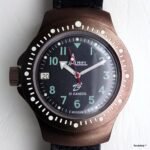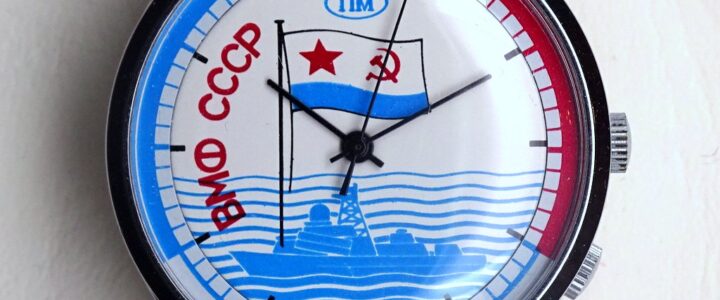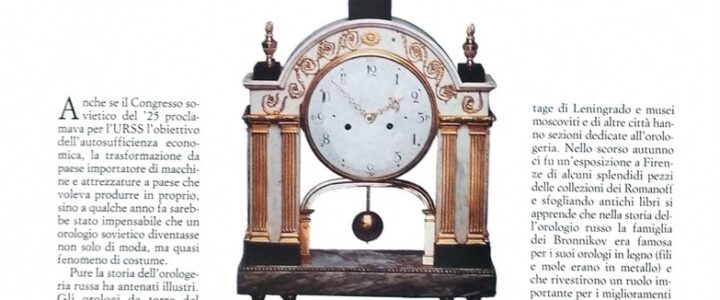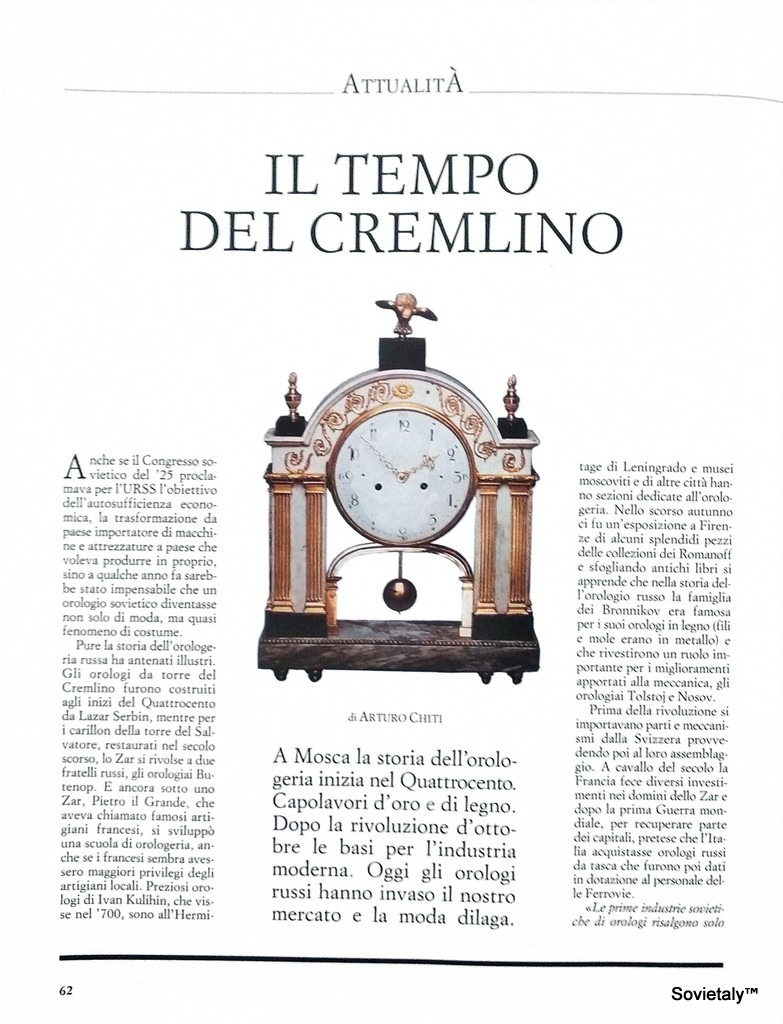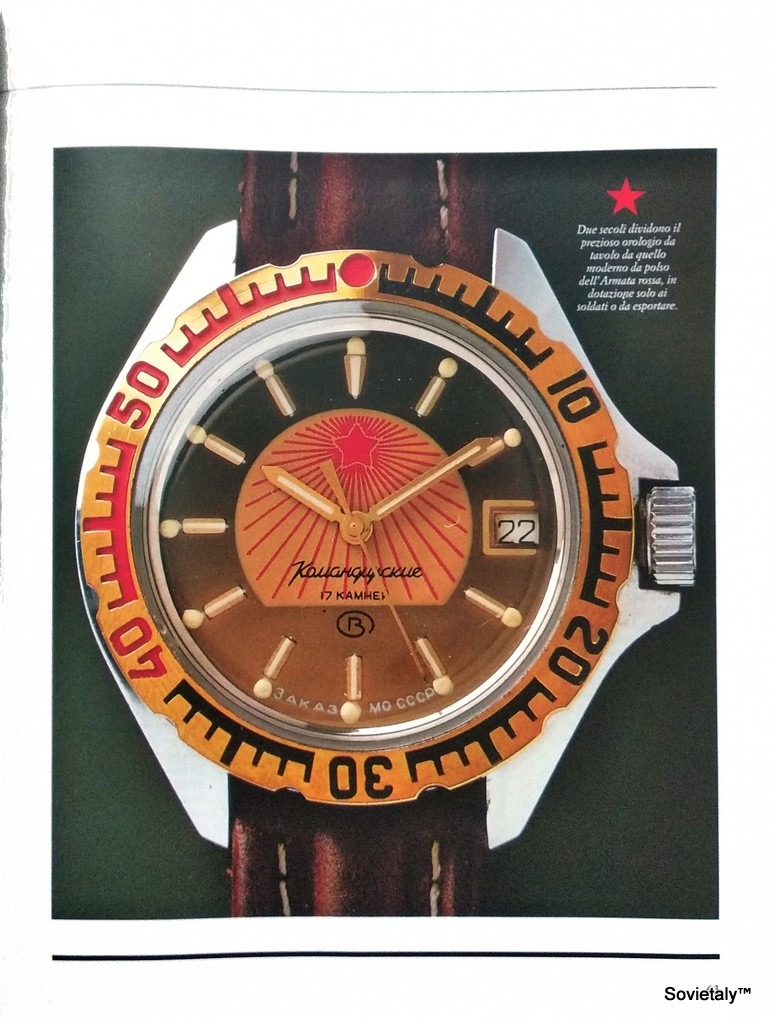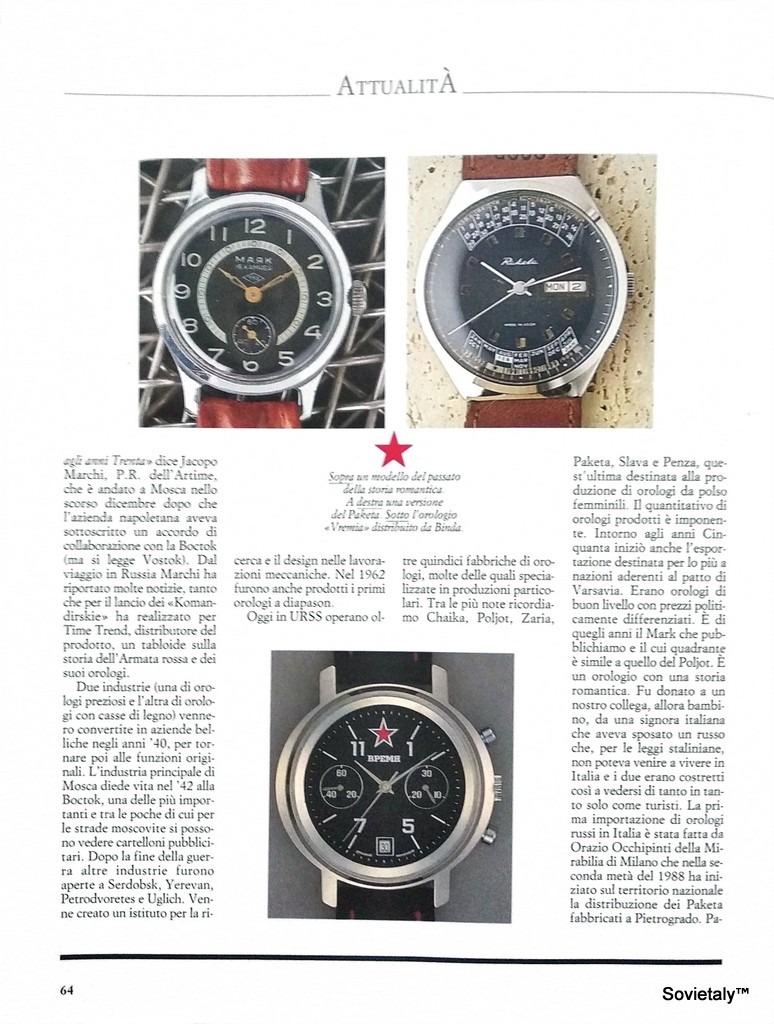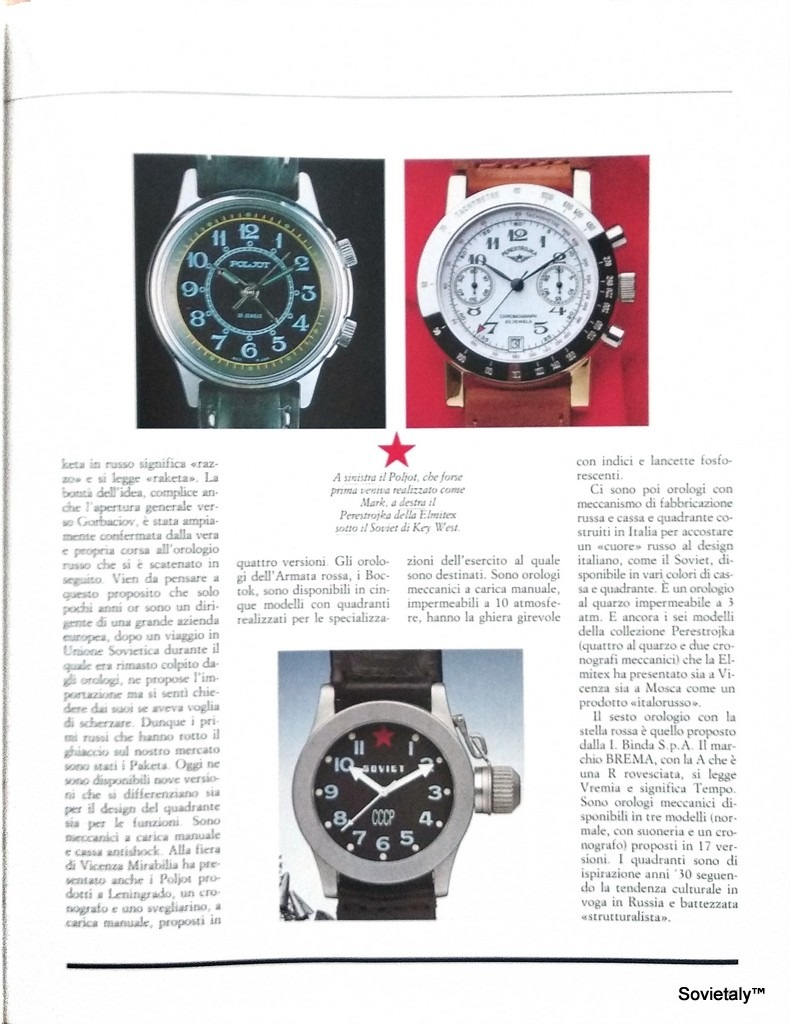During the Perestroika, a period of major economic and social reforms in the Soviet Union led by Mikhail Gorbachev, the historic Petrodvorets Watch Factory (also known as Raketa) gave rise to three unique cooperatives: Renaissance, Prestige, and Peterhof Masters. These cooperatives, active in the late 1980s and early 1990s, represent a fascinating chapter in the history of Soviet watches. Here, we will explore the history, activities, and peculiarities of each of these cooperatives.
Renaissance: The Art of Watches in Precious Stone
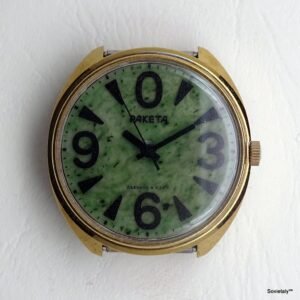
Origin and Specialization
The Renaissance cooperative emerged in the late 1980s at the Petrodvorets Watch Factory in Saint Petersburg, Russia. Founded during the Perestroika, Renaissance specialized in producing wristwatches and pocket watches with dials made of semi-precious stones such as jade, jasper, malachite, and nephrite. These watches were particularly appreciated for their beauty and uniqueness.
Activities and Production
Renaissance was renowned for the impeccable quality of its stone dials, making each watch a unique piece. The watches produced were mainly mechanical but also included quartz models. The pocket watches with stone dials were rare and produced in limited quantities, making them highly sought-after collectibles.
Sources and Videos
Prestige: Elegance Reflected in Mirror Dials
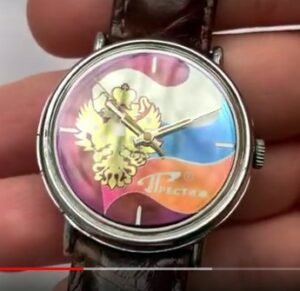
Origin and Specialization
The Prestige cooperative was also founded in the late 1980s, during a period of economic transition for the Soviet Union. Prestige is distinguished by its production of watches with mirror dials and iridescent coatings that change color depending on the viewing angle. This type of dial was particularly innovative and attractive.
Activities and Production
Prestige was famous for its mirror dials, often decorated with religious themes and images of churches. These watches were not sold commercially and were probably produced in very small batches. The watches had tall cases with a projection for the calendar, giving them a distinctive appearance.
Examples of Models and Technical Details
- Mirror dial with an image of Saint George the Victorious
- Gold-plated case nicknamed “Peterhof frog”
- Mechanical movement 2609
Sources and Videos
Peterhof Masters: Creativity and Printed Themes
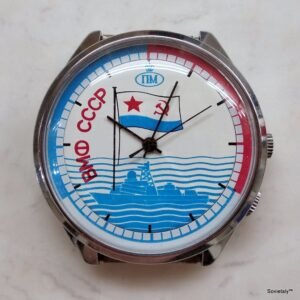
Origin and Specialization
The Peterhof Masters cooperative, also founded in the late 1980s, focused on producing watches with printed dials on various themes. This cooperative was known for the high quality of its prints and the variety of themes covered in its designs.
Activities and Production
Peterhof Masters’ watches were often decorated with naval and military themes. The dials were detailed and well-finished, giving the watches a particular charm.
Examples of Models and Technical Details
- Atomic Icebreaker Yamal: Printed dial with the image of the atomic icebreaker Yamal, mechanical movement 2614
- Koppernik: White dial with Roman numerals, naval and military themes, caliber 26NP movement
Sources and Videos
The Charm of Petrodvorets Cooperative Watches
Watches produced by the Renaissance, Prestige, and Peterhof Masters cooperatives not only represent the excellence of Soviet craftsmanship but also tell a story of innovation and adaptation during a period of significant change. These watches, with their unique characteristics and fascinating history, are precious items for collectors and watch enthusiasts.
Authoritative Sources
Alexander Brodnikovsky, a recognized expert in this field, has shared much of this valuable information, providing a detailed view of these rare watches and the cooperatives that produced them.

Conclusion
The cooperatives of the Petrodvorets Watch Factory represent a unique chapter in the history of Soviet watches. Each cooperative left a distinctive mark, creating watches that are appreciated today not only for their beauty and quality but also for their historical significance. Collecting these watches means owning a piece of history and celebrating the ingenuity and craftsmanship of the past.
- Raketa Big Zero: The Story Behind One of the Most Iconic Watches

- CCCP Sputnik 1 – A Watch That Celebrates the Space Age

- How to Remove Scratches from the Plexiglass of Your Watch: Complete Guide
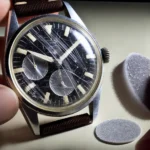
- Complete Guide to Modern Russian Watchmaking
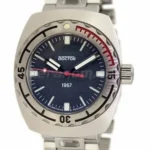
- Soviet CCCP Watch: The History of SOVIET Watches from the ’90s
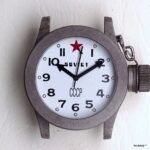
- Russian Military Watches: A Comprehensive Guide
